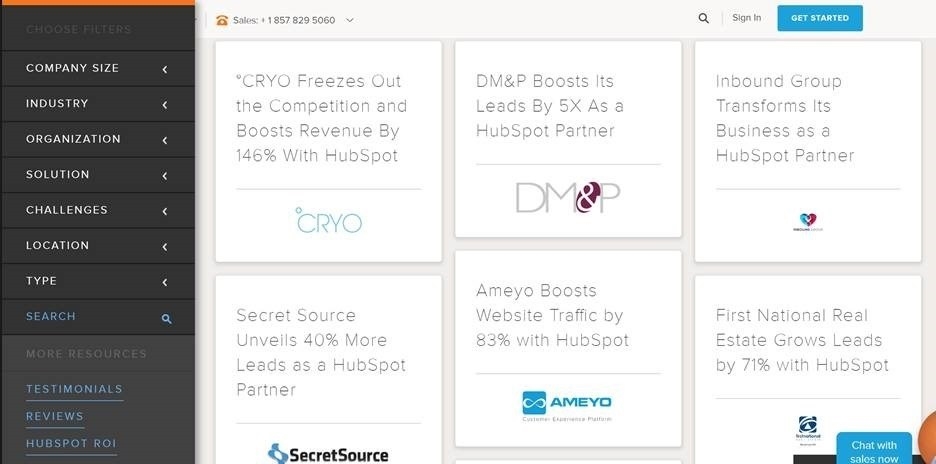
If you visit any business website, including this one, one thing you’ll see a lot of is case studies. But is there any point in including case studies on your website? Here are some of the reasons why all business websites (or any website where you’re promoting a product or service) need case studies, as well as some of the best ways to create them.
Why Case Studies Are A Key Marketing Tool
We all know about the importance of social proof – showing people who visit your site and are thinking about doing business with you that others like them have used your products and services effectively. Types of social proof include reviews, social shares, testimonials and, of course, case studies.
Case studies are a building block of marketing a business for improved lead generation and increased sales. Their purpose: winning new customers by demonstrating the success that existing customers have already experienced. That’s why some people call them customer stories or customer success stories.
A case study lets you show off what you do better than your competitors and what your customers love about you. At the same time, case study content helps inspire trust, and provides authoritative content in your niche, which is good for both SEO and your online reputation.

Getting Started With Case Studies
Before you create a case study, make sure you understand your key customers and their main pain points. Having in-depth customer personas will help you create customer stories that answer any recurring questions.
You can also collect information about pain points and buyer objections by:
- Checking with your pre-sales team for common questions
- Seeing what people ask you after they have purchased a product or service
- Monitoring social media
Then you’ll know exactly what issues you want to tackle when creating case studies.
How To Find Case Study Candidates
Your next step is to find case study subject who show how using your products or services has successfully addressed one of the key issues you’ve identified. But you can’t choose just anyone. Good case study subjects:
- Match one of your core customer personas
- Love your products and services
- Are happy to be interviewed
I’ve written a lot of customer case studies, so I’d add one more tip: make sure your case study subject is someone who can articulate the value that you bring. If you’re doing an audio or video case study, then stay away from people who get tongue-tied when faced with a recording device or camera.
When looking for case study subjects, monitor customer interactions on social media and via your helpdesk to see who’s saying something positive about you. And look for positive online reviews; those reviewers might make good case study subjects, too.
If you collect data in your business, you’ll already know who’s getting great results with your products and services. Find someone who’s willing to share their data, even if it’s only in terms of percentages, and you’ve got a good case study candidate.
And of course, if a major online influencer loves your product, featuring them in a case study can give an additional marketing boost.
Don’t forget to get a release form, giving you permission to use their information in a case study and in future marketing. There’s a good example of one in this Hubspot article.

What To Ask Your Case Study Subjects
Once you know who you’ll feature in a case study, it’s time to prepare to interview. You can do this by email, phone, message app, video chat or in person. Generally, you’ll get a better interview if you talk to people, because the human connection tends to give you a more natural interaction.
You’ll need some background on your case study subject’s business, then you’ll need to ask open ended questions (because they get better answers) about:
- The challenge they experienced that made them want to work with you
- What they tried so solve it, and what you offered that made them choose you.
- How your solution worked, and how they can prove it (in other words, the data)
- What stood out about the experience of working with you
- What they would tell others about your company, products or services.
You can expand this slim outline to suit your niche.
How To Write Up Your Case Study
There are lots of approaches you can use to create a case study from the interview material. For me, some of the best case studies tell a story, making the issues and people involved seem very real.
You can present your case study:
- In chronological order, telling events as they happened
- Using the challenge, solution, results template used on this site
- Using the background, objective, strategy, execution, results template, used on MarketingSherpa and others

Like all content marketing, you’ll want to write an attention-grabbing headline to draw people into your case study. Many case study headlines include the tactic used, the key benefit that the customer got, and some data. Here are some examples from this site:
- Non-profit uses Paid Search to boost revenue by 85.67%
- Re-marketing Campaign Testing Reduced Cost Per Acquisition By 66%
- SEP Helps CAA Boost Their Online Revenue 4x
When writing, you want to be factual, and can even include any setbacks, because including these increases your credibility. Highlight details that make your company look good, without being too self-promotional. Put your customer in the spotlight and let their words show how great you are.
Format your case study like other online copy, making it scannable. Include subheadings, bullet points, bold fonts and more to call out key data. Illustrate it where possible with graphs, screenshots and interview quotes.
Don’t be afraid to experiment with different case study formats. People present case studies not just as text, audio and video, but also as slideshows and infographics. It doesn’t matter as long as you’re telling a story potential customers will relate to.
How To Market Your Case Study
Once your case study is ready, it’s time to promote it. Your blog is an obvious place to show off your new case study, and you can do this in different ways:
- Write an announcement that you have a case study, including who’s featured and the key benefit, that links through to the full case study.
- Write a post that’s an abbreviated version of the case study, giving a few more details than the suggestion above.
- Publish your case study in full as a blog post, or gate the content, asking people to subscribe to your updates in order to read the whole thing.
You can also have case studies on their own separate landing pages and promote them to the customers they’re most relevant to. In fact, many businesses will require an opt-in to get a complete case study.
Case studies are also great for offline lead generation, because you can print them out as handouts to give away at networking events.
Done right, customer case studies can be a compelling business tool. How have you used them in your marketing?
* Adapted lead image: Public Domain, pixabay.com via getstencil.com
The post Why You Need Case Studies & How to Create Them appeared first on Search Engine People Blog.
(105)







